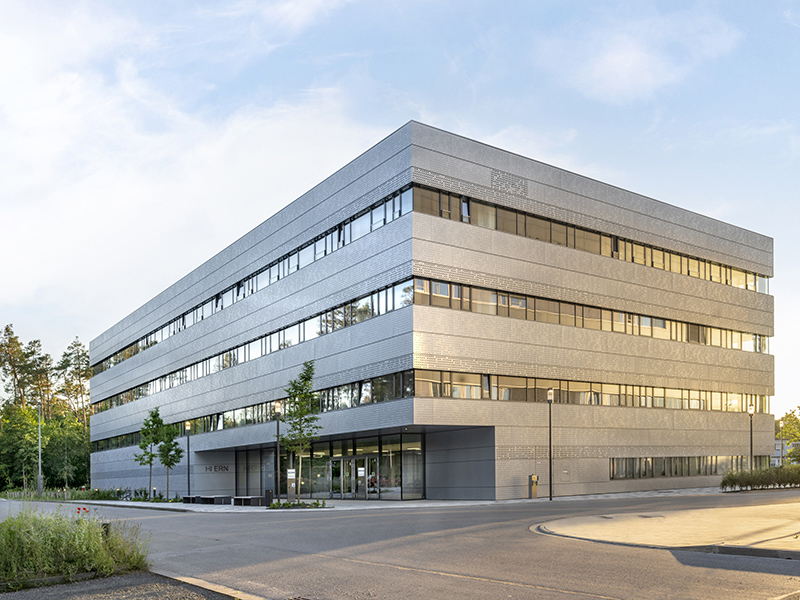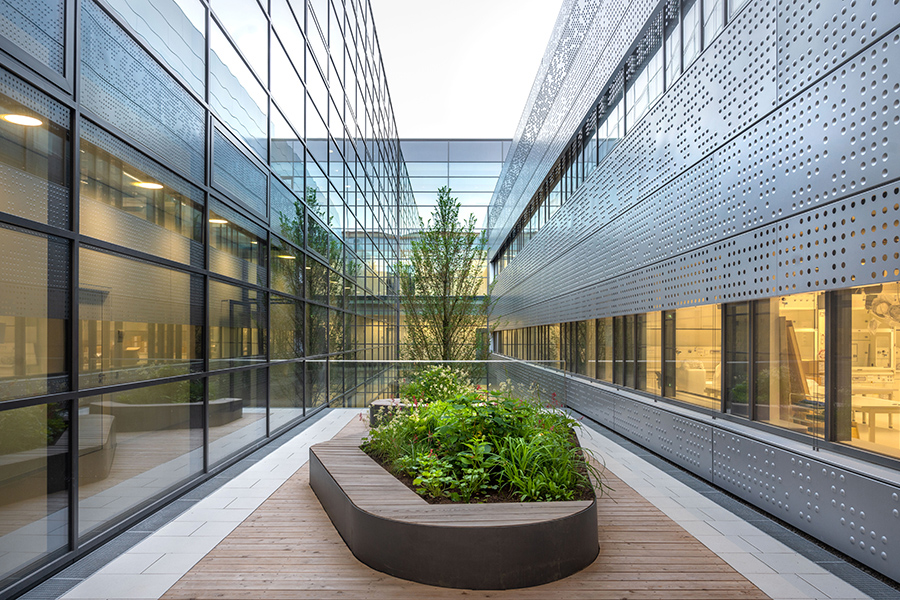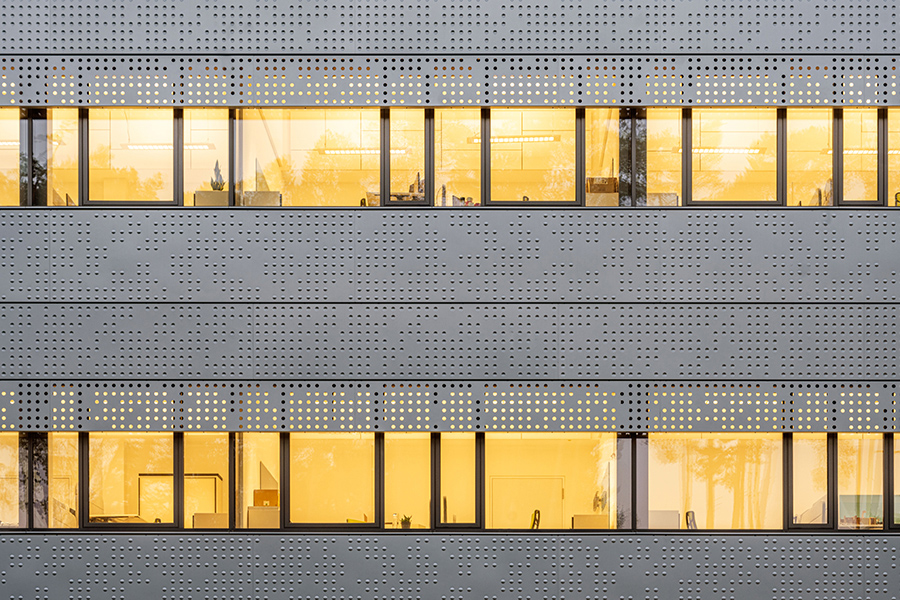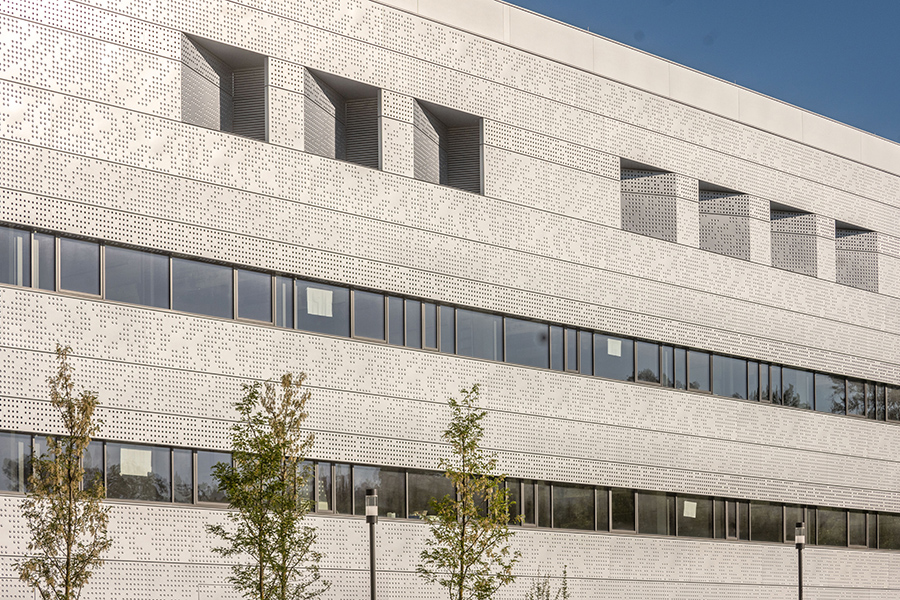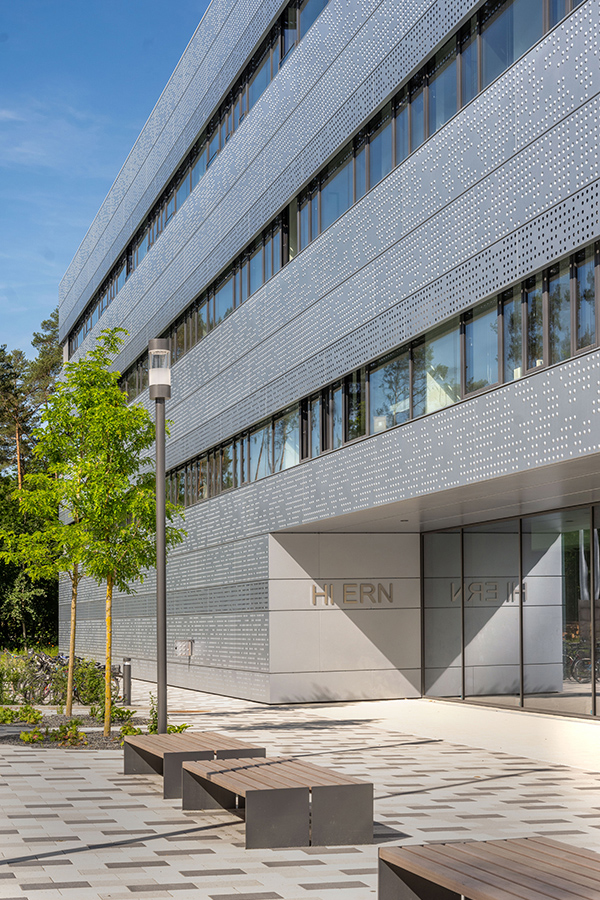Helmholtz Institute Research Centre
Energy-efficient facade with a nanostructure look
The new research building HI ERN has been completed on the campus of the FAU Friedrich-Alexander-Universität in Erlangen-Nürnberg, after almost three and one half years of build time. The Helmholtz Institute for Renewable Energies is an external office of the Research Centre Jülich and is operated in close cooperation with the FAU as well as with the Helmholtz Centre in Berlin.
The goal of HI ERN is to develop material and process-based solutions for climate-neutral energy production as well as linking excellent research in the fields of materials science, energy and process research. Around 115 men and women scientists will undertake interdisciplinary research for power supply for future generations, which should be environmentally friendly, sustainable and affordable. This approach distinguishes the new research building, which was created with a suspended, back-ventilated facade at the level of the Passivhaus standard.
The new headquarters of HI ERN is clustered around a narrow, yet long, green inner courtyard. From this, the zoning of the building leads away into an office and research region. The main structure of the building was conceived within the Cubist design principle, and an undercut completed on the ground floor distinguishes the entrance area. A foyer flooded with natural daylight connects to this, inside the building.
The development foyers which are staggered backwards and lie above one another at the southern end, as central communication areas share in the green inner courtyard situation with the towering elm. While this illustrates the process of natural photosynthesis as a “green lung”, the men and women working as scientists at HI ERN research regenerative energies to support this energy transformation.
The scientists’ offices on both floors are arranged in a U-shape around the greened inner quadrangle and connect directly to laboratory regions. Conference rooms as well as common rooms, staff rooms and communication regions are likewise positioned in the context of the “green lung” of the inner courtyard.
A techno character distinguishes the horizontally structured aluminium facade with its tactile effect structure, which reminds us of a surface with microscopically enlarged nanostructures.
Its fine and elaborate structure symbolises the complexity of the technical research work in the laboratories being undertaken in the building, and exemplifies the openness of HI ERN as a part of the scientific research environment. With its massive parapets and window breasts typical for laboratory buildings, at the same time the wraparound facade also ensures energy efficiency.
The challenge for the technical design of the substructure system was, that the building facade had to comply with the Passivhaus standard, and the same time should be easy to install. Therefore, the choice was made to use the ALKAPO with its wide span widths, from the substructure system manufacturer SYSTEA. In combination with the L-shaped and U-shaped stainless-steel wall brackets with building type approval, the number of faults and discontinuities in the insulation could be reduced to a minimum, and in this way energy losses through thermal bridging could be kept to a low degree.
A further advantage of the ALKAPO Systems was the technically simple and rapid installation, using a well-known type of construction for the cladding installation company. The construction’s long cantilever also proved to be a special challenge, which the perforated cassettes had to take up above the windows. In close collaboration with the experienced cladding installation company, after all it was possible to develop a construction, which reduced the energy footprint of the building envelope as far as technically possible and at the same time was distinctly resource-efficient.
Project details
- Project: Research Center of the Helmholtz-Institute
- Place: Erlangen
- Country: DE
- Building type: Education
- Type of construction project: New build
- Completion: 2021
- SYSTEA wall bracket: Stainless steel
- SYSTEA profile system: ALKAPO
- Cladding material: Aluminum cassettes
- Fastening: Concealed
- Architect: Gerber Architekten, Dortmund
- Photos: Systea GmbH / Dieter Leistner
If you would like further information, please contact us.

